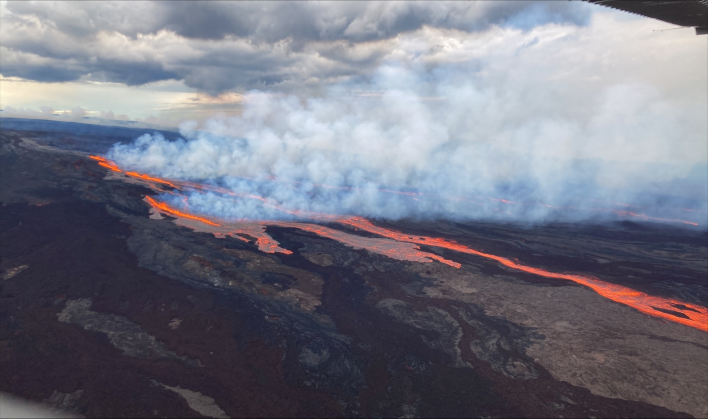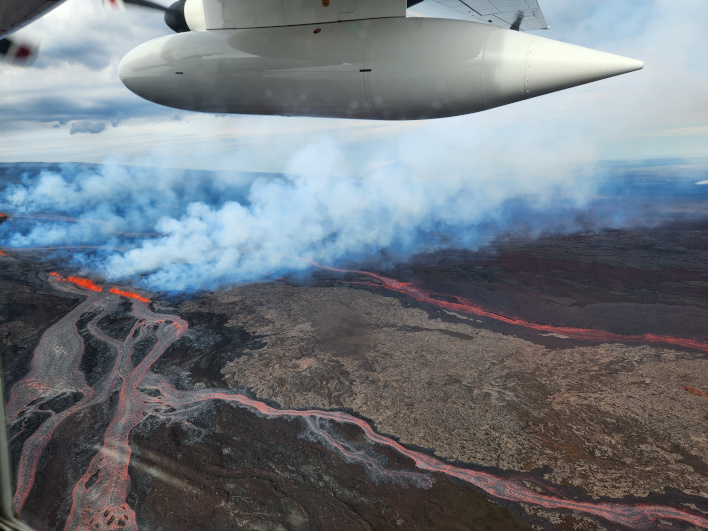Why NASA Is Closely Watching Eruption Of Hawaii's Mauna Loa, The Largest Volcano On Earth

According to U.S. Geological Survey, Mauna Loa erupted at 11:30 p.m. local time. Since the initial eruption, the volcano's alert level has risen from an "advisory" to a "warning". This is the first eruption of the mammoth volcano since 1984, according to the U.S. Geological Survey's (USGS) Hawaii Volcano Observatory daily update. While most of the space-related facilities are located atop the summit of Maunakea, a few could be at risk depending on how things play out.
"The lava right now is confined to the caldera," John Torrey, an astronomer at the University of Hawaii stated in an email sent to Space.com. "It may subside, it may flow south, we don't know. There is some ash flying around, and we are in shutdown state."

As of right now, the lava is confined to the caldera, the hollow area at the top of the volcano, as well as a few fissures in the Northeast Rift Zone. "Lava flows are not threatening any downslope communities, and all indications are that the eruption will remain in the Northeast Rift Zone," USGS officials said in a recent statement.
The USGS cautioned, "Based on past events, the early stages of a Mauna Loa eruption can be very dynamic and the location and advance of lava flows can change rapidly." The agency warned that while lava flows are currently contained, "if the eruptive vents migrate outside its walls, lava flows may move rapidly downslope."
"Out of caution, our observers won't be going up there today," remarked Holly Gilbert, a solar scientist, and director of the High Altitude Observatory, in an interview with Space.com. "It's possible there could be lava erupting on the summit for weeks without danger to the observatory."

